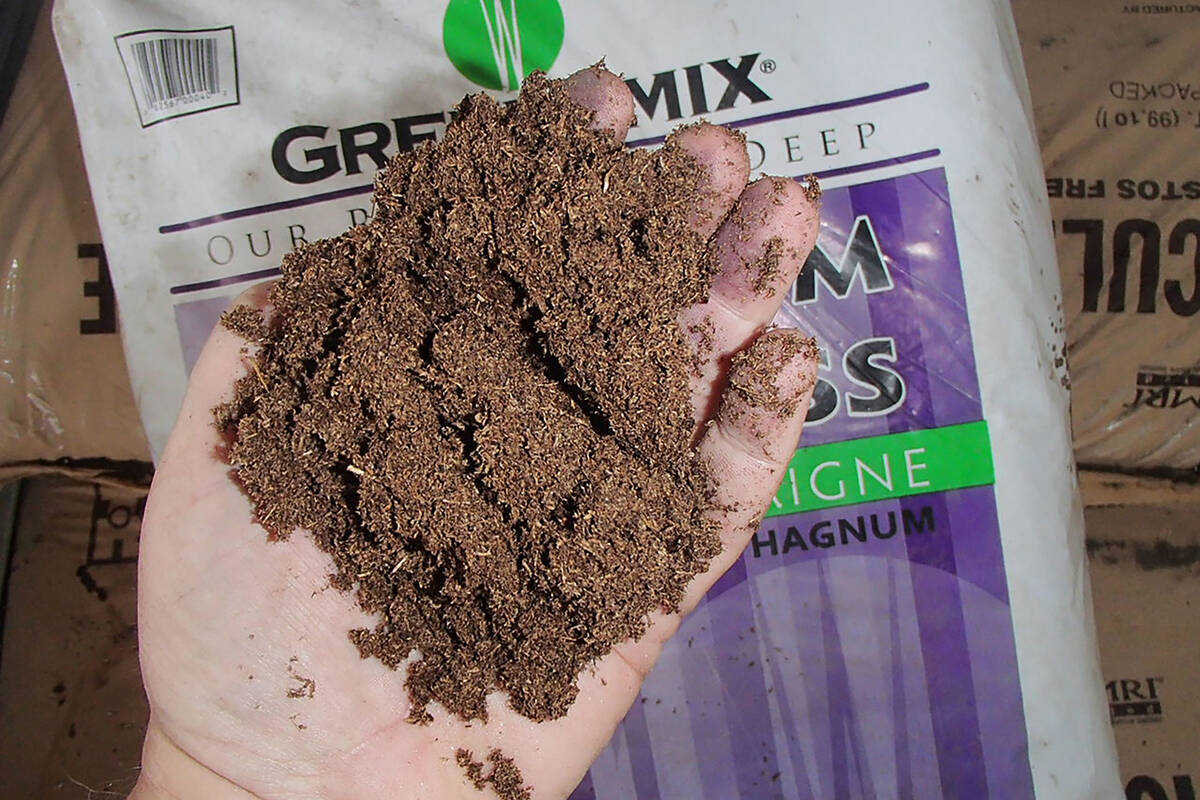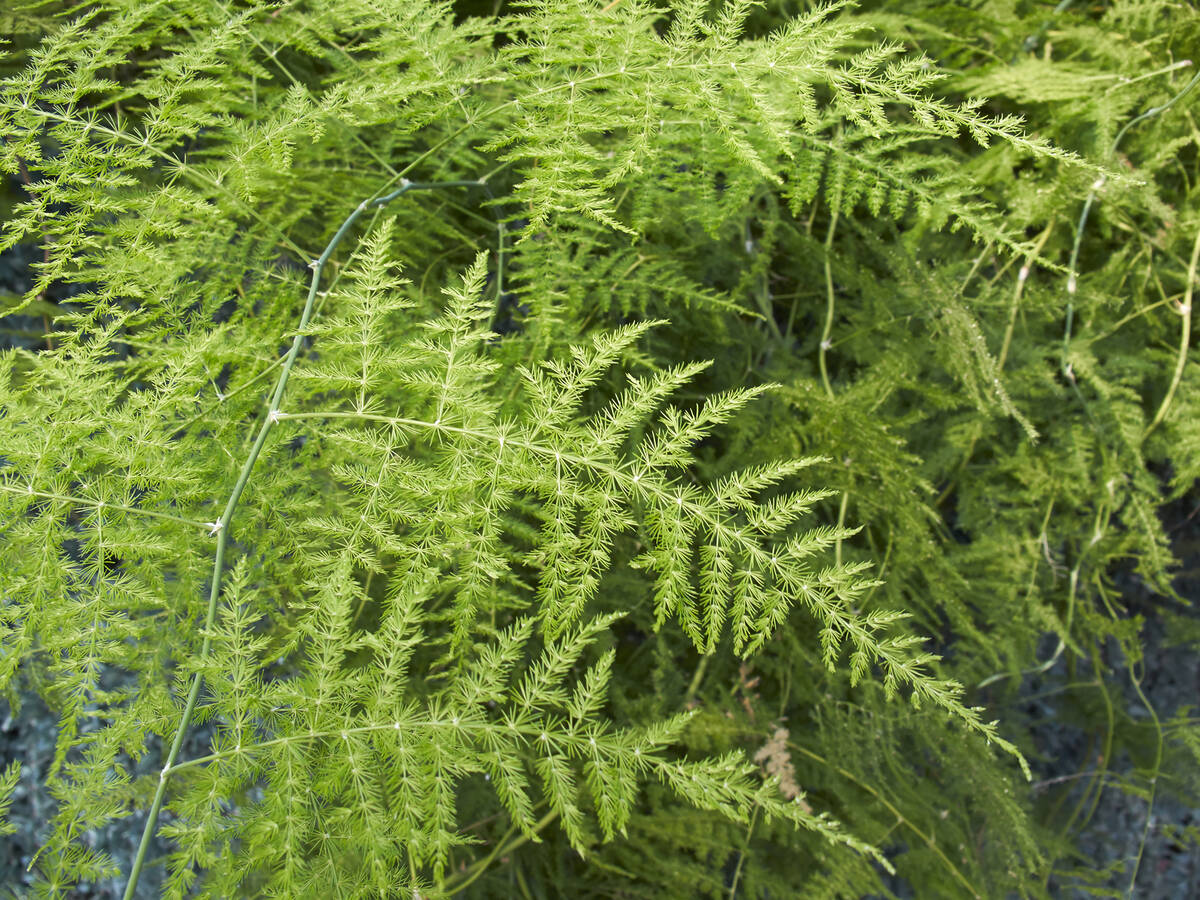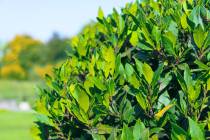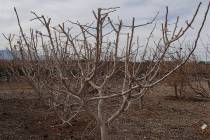Would peat moss work in place of compost?
Q: I am having a hard time finding compost to use. Will a peat moss that a local nursery sells work like compost?
A: No, it won’t. When compost decomposes it does two things: It keeps the soil open, and it releases nutrients. Peat moss just keeps the soil open. Peat moss and compost are two different things. Peat moss is used in soils to help keep them loose and porous and improve water drainage. It doesn’t provide much nutrition and slowly breaks down in the soil, much slower than compost. And when peat moss does decompose, it does not release the same nutrients.
Compost and peat moss are added to soils for similar reasons, but the addition of compost provides a lot more nutrients to the soil. If enough is used, it can substitute for a slow-release fertilizer. If you add peat moss to a soil it improves its structure, but you still need to add a fertilizer high in nitrogen.
In my opinion, compost is much more valuable to add to our soils than peat moss, unless you are making a very specialized soil blend such as for potting soil or houseplants or are growing seedlings in a greenhouse. If you are growing vegetables, fruit trees, landscape plants or lawns, compost is a much better choice than peat moss and more cost-effective.
Q: I see that some people cut roots of asparagus to make them shorter before planting them at the base of fruit trees. This is to encourage a food forest. I did this last year and it seemed to work. Someone commented about interference. Is it a good idea? It makes asparagus easier to plant, but is there a consensus?
A: There isn’t a consensus. I don’t have a problem with planting asparagus at the base of fruit trees. Fruit trees and asparagus have about the same lifespan. They have a similar perennial root structure that requires similar irrigation. That’s what you’re looking for in a companion plant for fruit trees. You want to stay away from annuals that you have to pull out seasonally. The flowers look pretty and cute, but they don’t help the fruit tree much.
The problem I am concerned about is interference with the growth of the fruit tree. It’s true these ferns growing in the shade of fruit trees will not collect as much energy for growth of their crowns the following year, but I think that is a minor problem.
After the asparagus has been harvested for about six to eight weeks in the early spring, the shoots are allowed to grow taller or “fern out” so they can gather energy for next year’s production. These ferns can be quite tall — 5 to 6 feet — when growing in the desert. I can see how they might grow up into the branches of the fruit trees. You could cut the ferns back to maybe 3 to 4 feet tall without causing many problems. These ferns might provide some shade on the trunk of fruit trees as well.
Asparagus and fruit trees have similar fertilizer and water requirements, so that is not a problem. The amount of phosphorus needed by asparagus is smaller compared with the amount needed by fruit trees. Regarding the asparagus crowns competing with the fruit tree, it’s true but not a huge problem if you don’t plant too many crowns at the base of the tree. I think you are fine with two crowns planted initially and expanded to four crowns planted as the tree grows in size.
You might experience crooked spears as they grow from crowns around a tangled bunch of fruit tree roots. That can be a problem with asparagus when rocks or other barriers are present, but it certainly doesn’t interfere with their taste. Let me know how it turns out, but I don’t think there is a major problem.
Q: There was an article about sparaxis and ixia bulbs from South Africa in the newspaper. I checked with our local nursery, but they have no idea how or where to get them. Maybe you know?
A: It is best to buy them online. The sparaxis tricolors are also known as harlequin bulbs. They should be planted about 5 inches deep and 3 inches apart to make a show of color. They will be about 2 feet high when fully grown. They remind me of tulips in that they grow during the winter and flower in the spring, but these bulbs (unlike tulips) are damaged if winter temperatures get below about 25 degrees. They can handle the heat much better. Remember, they should not be planted on the south or west sides of buildings with plenty of indirect light unless planted in the shade of trees. Like tulips, Harlequin bulbs prefer to grow in amended soils but also like plenty of drainage. Use lots of compost every two or three years, particularly when planting. About 30 percent compost will be the right amount.
Ixia is also known by its common name, corn lilies. Just like tulips or harlequin bulbs, corn lilies prefer to grow in organic soils with good drainage. Again, use plenty of compost. Both harlequin bulbs and corn lilies like to be kept moist when they are growing. If you want to reduce the water use, water them less after they finish blooming in late spring or early summer.
Q: I am interested in growing pomegranates in the Barstow-Newberry Springs area.
A: You should have no problems with pomegranates there unless you are at very high elevations. Most pomegranates will handle temperatures down to about 15-20 degrees. Some of my favorites for the desert include the varieties Wonderful, Eversweet, Sweet, Utah Sweet, Parfianka, Sharps Velvet and Pink Satin. Some of these and other varieties include edible seeds and lower in tannins. Read about them first before you buy.
Plant them with compost amending the backfill around the roots. Keep the suckers from the base pruned so that you have one to five trunks coming from the base. Prune them to four or five main central trunks or stems and remove all sucker growth over the next several years. They work great with drip irrigation. Use two emitters when first planted and then expand to at least four or five emitters as they get larger over the next few years. A layer of wood chips helps to control weeds and keeps suckers at a minimum.
I like to keep them at around 8 to 10 feet tall and spaced no closer than about 10 feet apart. Fertilize them at least once or twice a year.
Q: I have a sissoo tree that was planted about four years ago. It was then moved from the back to the front yard. The hole was sifted, intermixed with better soil. I have fertilized it each spring. It is now about 15 feet tall, shows life with new buds, and seven limbs showing green. The problem is, it doesn’t seem to be growing at all. Maybe I should just let it go and find a different kind of tree.
A: This is a tall subtropical tree. It grows well in the Phoenix area, but I’m not so sure about the Las Vegas area. It does well as far north as central Florida, but not in Nevada. I don’t have any hands-on experience with it.
When a tree is moved after four years, it takes some time to set new roots in its new spot. A general rule of thumb is to remove about one-third of its top growth to compensate for the loss of its roots when it’s moved. I generally tell people that about three years is the maximum you can wait when you’re doing it yourself. At three years, the tree is still fairly easy to move.
Personally, I wouldn’t keep the tree for two reasons: its potential height (60-plus feet tall) and its tenderness to winter temperatures.
Bob Morris is a horticulture expert and professor emeritus of UNLV. Visit his blog at xtremehorticulture.blogspot.com. Send questions to Extremehort@aol.com.





























